Sigma A 24-105 mm f/4 DG OS HSM
3. Build quality and image stabilization
In the photo below the Sigma A 24-105 mm f/4 DG OS HSM is positioned next to another A series instrument, namely the Sigma A 35 mm f/1.4 DG HSM.
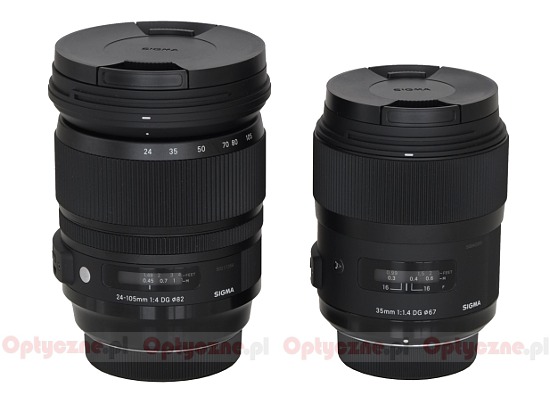 |
Please Support UsIf you enjoy our reviews and articles, and you want us to continue our work please, support our website by donating through PayPal. The funds are going to be used for paying our editorial team, renting servers, and equipping our testing studio; only that way we will be able to continue providing you interesting content for free. |
- - - - - - - - - - - - - - - - - - - - - - - - - - - - - - - - - - - - - - - - - - - - - - - -
The tested lens starts with a metal mount which surrounds contacts and a rear element, 27 mm in diameter. The element is positioned on the same level as the mount at 24 mm and it hides about 3 cm inside the casing when you pass to 105 mm focal length. The area close to the element is nicely matted and blackened; unfortunately on both sides you can also see two bright yellow tapes with wires.
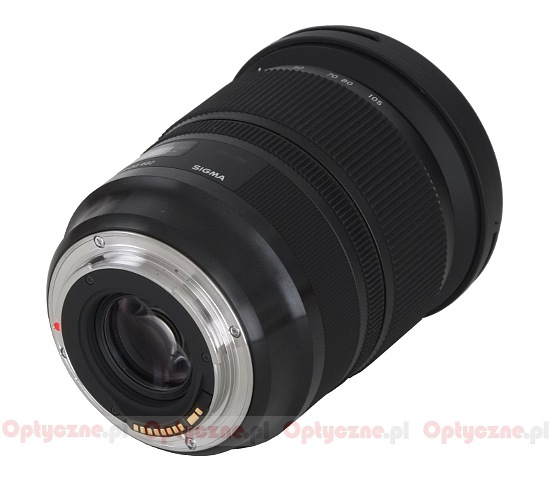 |
The proper casing of the lens starts with a smooth, black, metal ring on which there is a white dot, making the alignment with a camera easier, and a small inscription “MADE IN JAPAN”. Further on you can find the name and the parameters of the lens and above them - a distance scale behind a window, expressed in feet and meters. On the left side of the scale there is an “A” symbol meaning that the lens was classified as the “Art” category, a focusing mechanism mode switch (AF/MF FOCUS) and an optical stabilization switch (OS ON/OFF).
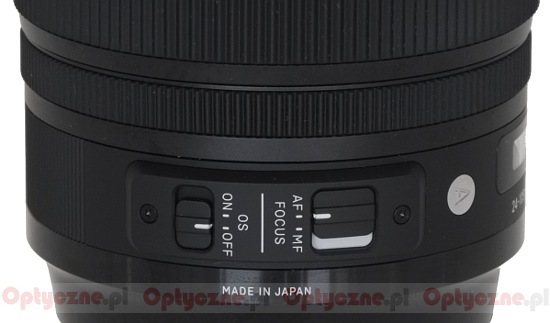 |
A manual focus ring is the next part of the casing; it works in both modes, MF and AF, is 12 mm wide and most of its surface is covered by rubber ribs. The ring moves evenly and is well-damped; still we have two reservations about it. The first concerns its working range, which amounts to just 90 degrees – hardly a value which ensures precise settings. Secondly, taking the complete dimensions of the lens into account, we think the ring could have been bigger and, consequently, more comfortable to move.
A zoom ring is the next element of the lens. It is huge for a change, as wide as 37 mm. Here you also deal with rubber ribs, improving the grip; on the ring you can also find focal lengths markings at 24, 35, 50,70,80 and 105 mm.
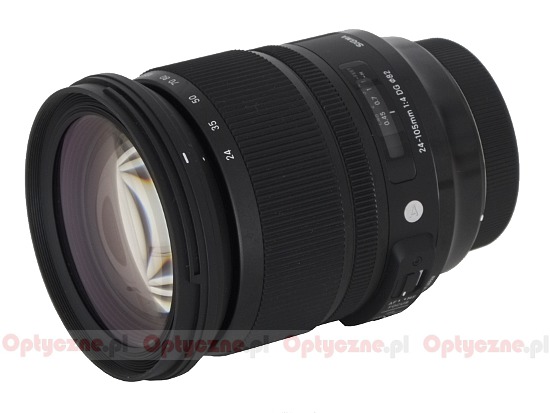 |
Further on you see a front element system which extends with the increase of the focal length on a telescopic, two-part tube. During that process the lens becomes longer by almost 5 cm. What’s interesting, the tube is made of plastics; still it looks solid and has no side play even if you press it with a lot of strength. It also never extends on its own, even if you point downwards the camera with the lens attached.
The front element is 68 mm in diameter; it is surrounded by a non-rotating filter thread, 82 mm in diameter, and a thread for petal-type hood.
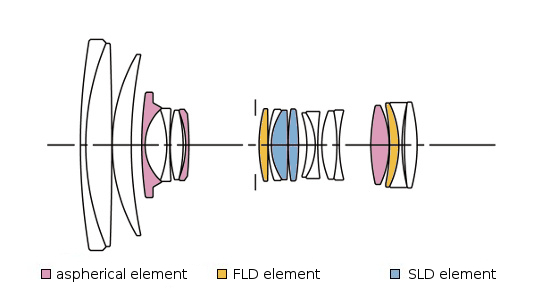 |
When it comes to the optical construction we deal here with 19 elements positioned in 14 groups. There are a lot of special elements inside – two of them are made of glass with fluorite properties (FLD), two others are made of low dispersion SLD glass and three are aspherical. Inside you can also find a circular aperture with nine blades which can be closed down to the value of f/22.
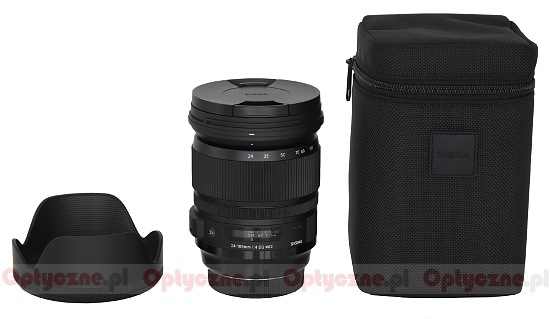 |
Buyers get in the box: both caps, a petal-type hood and a hard case.
Image stabilization
Most of producers of stabilized optics boast of an efficiency level of 4 EV. The Sigma 24-105 mm is not an exception to that rule. Of course we decided to check those claims; we conducted a test during which, at 105 mm focal length, we took several dozen photos at every exposure time ranging from 1/100 to 1/2 of a second with the stabilization switched on and off. Then we determined a percentage of blurred photos for every exposure time and presented the results as the exposure time graph, expressed in EV (where 0 EV is an equivalent of 1/80 of a second).
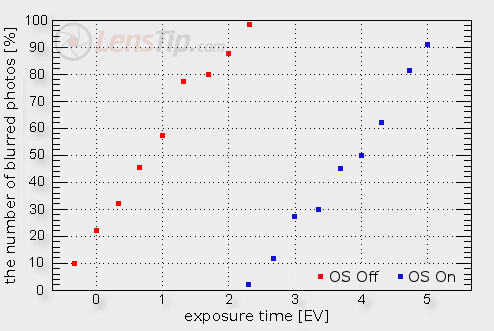
As you can notice the maximum distance between both curves reaches 3.3 EV and such is also the efficiency of the stabilization system of the tested Sigma. It falls short of these declared 4 EV but we admit our test is pretty demanding so few lenses reach their declared values anyway. Taking it into account we assess both the result of the Sigma and the efficiency of its stabilization mechanism very positively.






